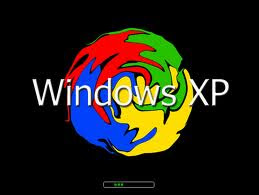Windows XP is one of the best operating systems from Microsoft. Realizing the popularity of it, Microsoft has permitted the use of XP mode even in the latest Windows 7. Installation procedure of Windows can differ as per the requirement. Someone may need to perform a clean install, or some may try to upgrade it. While some others may practice for a multiple boot operating.
Clean Installation
Before installing Windows ensure that your computer has the minimum hardware requirement for supporting Windows XP.
"As per recommendation you must have a computer equipped with a processor of minimum 233 MHz to 300 MHz or higher, minimum memory around 64 MB RAM2 to 128 MB RAM or higher, video adapter and monitor -Super VGA (800 x 600) or higher resolution and Hard drive disk free space -1.5 GB or higher."
Note: Additional 1.8 GB in Service Pack 2 and additional 900 MB in Service Pack 3.
Follow the given steps to install Windows XP:
Step 1 - Load Windows XP CD in your DVD-ROM drive and restart the computer. Press any key when prompted as "Press any key to boot from CD".
Step 2 - Wait for the Windows Setup screen. You will get options as: New Windows install, Repair previous install, or quit. Press Enter key to start new Windows install.
Step 3 - Follow the on screen prompts to complete the installation process with the setup wizard.
Step 4 - Now, to create partition press "C." You are flexible to decide number of partition and size of each. Press Enter, once you have decided the size. You can decide the partition, where you want to locate operating system XP's file. Choose the file system as "NTFS", as permitted for Windows XP and complete the installation procedure with the help of on-screen prompts.
Upgrade to Windows XP
You can easily upgrade your present XP edition with the desired one. You have to follow the steps given above, except when asked for installation type select Upgrade (the default setting), and then click Next. Now, go on following the on-screen prompts and your Windows XP installation will be completed.
In case you are interested for multiple booting you should install each operating system on a different partition of your hard disk, otherwise you may suffer from software confliction issue.





